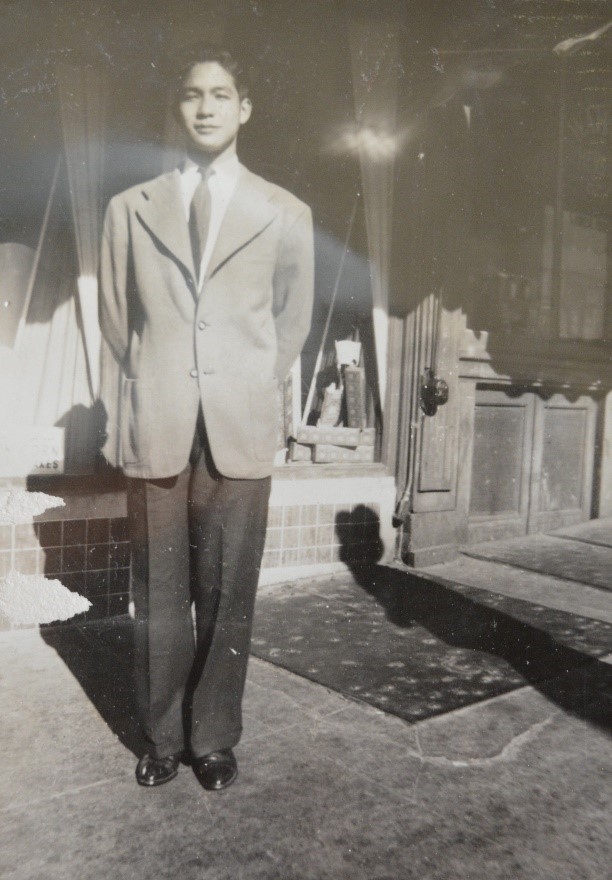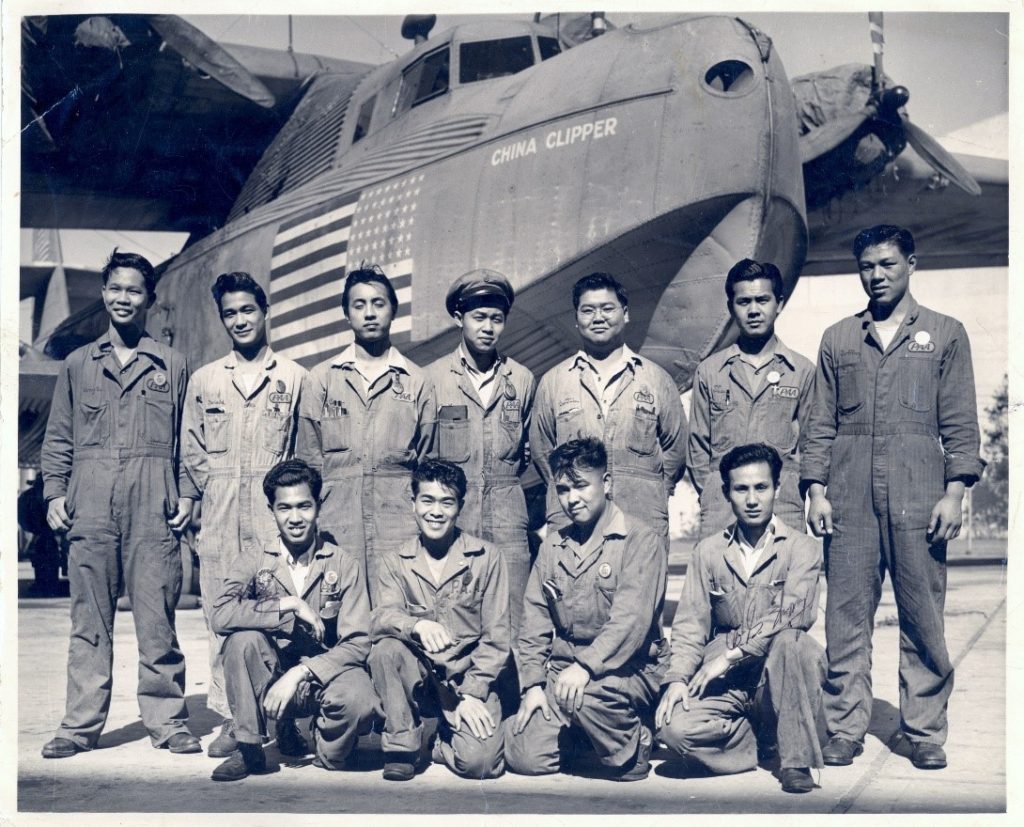By Dr. Raymond Douglas Chong (Zhang Weiming)
Ronald Chin Won is a pioneer aviator who, against all odds, overcame racism to become a military and commercial pilot for the Air Force and Pan Am in 1939. As a trailblazer in the Chinese American community, he served in three wars and became both an accomplished military and commercial aviator until 1985.
Ronald was born on May 20, 1925, at Omaha – Gateway of the West in Nebraska. Jok Chin, his father, was a successful merchant from Toishan with various businesses including the famous King Fong Café in downtown Omaha.

In 1928, Jok moved his family from Omaha to San Francisco – The Paris of the West. He wanted his children to know Chinese culture and language. But after 1929, the Great Depression bankrupted Jok. They lived in poverty and chronic hunger as they scavenged for food scraps in Chinatown and Downtown.
Little Italy of North Beach was next to Chinatown where the bigger and taller Italian boys would often taunt and beat the smaller statured Chinese boys. With his boxing skills, Ronald valiantly fought to support his friends and underdogs.
Ronald lived during the Golden Age of Flight which inspired his passion to be an aviator. In 1939, while attending Galileo High School, after classes, he worked as an aircraft mechanic’s helper for Pan American World Airways (Pan Am), at its Treasure Island terminal. He helped maintained the various flying boats (seaplanes), including the iconic China Clipper.

After the attack on Pearl Harbor on December 7, 1941, moved with a deep sense of patriotism, Ronald left high school to quickly enlist with the U.S. Naval Reserve. As a machinist mate, he initially serviced Navy seaplanes at Naval Air Station Treasure Island. He later served at Naval Air Station Honolulu. And finally served at Naval Air Station Mills Field in California where he was discharged in 1946.
After World War II, in 1946, Ronald returned to complete his last semester and graduated from Galileo High School. He also returned to Pan Am to work as an aircraft mechanic at Mills Field Airport (now San Francisco International Airport). Via the Pan Am flying club, he learned to fly a propeller-driven aircraft. He obtained his pilot’s license at Belmont Airport, in 1947.
In 1948, Ronald enlisted in the U.S. Marines Corps. He worked at Naval Air Station Alameda for the VMF 141 Corsair F4U Fighter Squadron. He requested pilot training in the Marines and in the Navy but was refused, but through the U.S. Air Force, on May 6, 1949, Ronald entered the U.S. Army Air Corps’ Aviation Cadet Training Program. The Air Force administered the physical and the STAY-9 test (STAndard NINE), but the Army provided the actual training.
In Texas, Ronald underwent basic pilot training on the AT-6 and advanced fighter jet pilot training on the T-33. On May 11, 1950, he was commissioned as second lieutenant with United States Air Force (USAF) and assigned to the 523rd Strategic Fighter Squadron of the “Just Famous” 27th Fighter Escort Wing.
At Bergstrom Air Force Base in Texas, Ronald flew the Republic F-84 Thunderjet, a turbojet fighter-bomber aircraft. During the Cold War, under Strategic Air Command, he was trained to drop atomic bombs. He participated in Operation Fox Able 3, where ninety F-84 Thunderjets performed air-to-air refueling from Texas to West Germany, for the first time in history.
On June 25, 1950, the Korean War began when North Korea invaded South Korea. On December 6, 1950, the 523rd Fighter Squadron flew combat missions from Taegu Air Base, South Korea. Because of Chinese attacks, on February 1, 1951, they operated at Itazuke Air Base in Japan. During Ronald’s second tour of assignment, in October 1952, he flew out of Misawa Air Base in Japan.
The highlights during Ronald’s two tours:
- In North Korea, above Chongchon River, during a bombing mission on a bridge, he shot down one Russian Yak-9 aircraft.
- In North Korea, over Sinuiju airfield, he shot down four Russian MiG-15 jet fighter aircrafts.
- As forward air controller, he and another colleague ingeniously evaded capture by Chinese People’s Volunteer Army at an abandoned village near Suwon, South Korea.
- During a four hundred jet fighters sweep at An Tung Air Base in Manchuria, China, across the Yalu River, he strafed MiG-15s on their rolling takeoffs.
- After a dive-bombing attack on a bridge in Pyongyang, North Korea, the canopy of his F-84 Thunderjet exploded off due to groundfire, but he succeeded in making the harrowing return back to Itazuke Air Base.
- His unit escorted the aircraft of President Dwight Eisenhower when he travelled to South Korea.
- He chased a UFO (unidentified flying object) over the skies of Hokkaido, Japan.
Because of his Chinese heritage, Ronald never received any credits for his five kills, and partly due to that, the USAF never promoted him to fighter ace. His credits were assigned to “golden boys” who were groomed to be Air Force generals. They allege to protect his Chinese relatives.
During the Korean War, he felt no dilemma in fighting the Chinese.
“There was no problem–it was either him or I. It was a matter of survival.”
After the armistice of the Korean War, Ronald served in the Air Force Reserve, based in the United States. From 1966 to 1968, he flew the Boeing C-135 Stratolifter in cargo missions for Military Air Command during the Vietnam War. In May 1978, he was promoted to colonel. On May 20, 1980, he retired from the USAF, rated as a command pilot, after 30 years of service.

After the Korean War, Ronald sought a pilot job with Pan Am, but management was reluctant to hire a Chinese pilot. Chief Pilot Sam Peters overrode the racial objections. In 1955, he was trained at their flight academy at San Francisco International Airport.
During midst of the Jet Age, Ronald began as flight engineer, then became first officer in 1961, and finally captain in 1972. He flew around the world on a Boeing 747 Jumbo Jet aircraft. While challenged for his ethnicity in the cockpit, cabin, airside, and landside, Ronald did not let these challenges prevent him from pursuing his lifelong dream as an aviator.
On September 9, 1983, Ronald’s piloting skills were duly noted when he successfully landed a Pan Am Boeing 747 Jumbo Jet at the old Kai Tak Airport in Hong Kong when cyclone winds from Super Typhoon Ellen (hurricane force winds) slammed Hong Kong. On May 20, 1985, Ronald retired from his forty-year career in Pan Am.
The USAF has never duly recognized Colonel Ronald Chin Won as an American Fighter Ace, a military pilot credited with destroying five or more confirmed enemy aircraft in aerial combat during a war or conflict. They never confirmed his five kills.
To remedy this injustice, in January 2019 at San Francisco, I presented a bronze medal, a duplicate of the Congressional Gold Medal for American Fighter Aces, to Ronald.
In 2020, Congress, with the Chinese American WWII Veterans Recognition Project, will recognize Ronald with the Chinese American World War II Veteran Congressional Gold Medal.
As someone who lived in poverty during the Great Depression and a member of the Greatest Generation, Ronald has accomplished his lofty dreams as military and commercial aviator for our Chinese American community. He honorably served our country during World War II, Korean War, and Vietnam War, in all four branches (Navy, Marine Corps, Army, Air Force) of the U.S. Armed Forces. He was the only Chinese American fighter jet pilot during the Korean War and the first Chinese American pilot for Pan Am.
Colonel Ronald Chin Won is our pioneer aviator.
AsAmNews has Asian America in its heart. We’re an all-volunteer effort of dedicated staff and interns. Check out our new Instagram account. Go to our Twitter feed and Facebook page for more content. Please consider interning, joining our staff or submitting a story




Colonel Won’s history is featured in History and Perspective (2019) https://chsa.org/product/chinese-america-history-perspectives-2019-digital-version/
If Ronald Won started at Pan Am in 1955 and retired in 1985, he was with Pan Am 30 years, not 40 years.